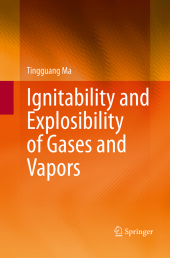 Neuerscheinungen 2016Stand: 2020-02-01 |
Schnellsuche
ISBN/Stichwort/Autor
|
Herderstraße 10
10625 Berlin
Tel.: 030 315 714 16
Fax 030 315 714 14
info@buchspektrum.de |

Tingguang Ma
Ignitability and Explosibility of Gases and Vapors
Softcover reprint of the original 1st ed. 2015. 2016. xxii, 213 S. 106 SW-Abb., 44 Tabellen. 235 mm
Verlag/Jahr: SPRINGER, BERLIN; SPRINGER NEW YORK; SPRINGER 2016
ISBN: 1-493-94953-5 (1493949535)
Neue ISBN: 978-1-493-94953-3 (9781493949533)
Preis und Lieferzeit: Bitte klicken
The book provides a systematic view on flammability and a collection of solved engineering problems in the fields of dilution and purge, mine gas safety, clean burning safety and gas suppression modeling.
For the first time, fundamental principles of energy conservation are used to develop theoretical flammability diagrams and are then explored to understand various safety-related mixing problems. This provides the basis for a fully-analytical solution to any flammability problem. Instead of the traditional view that flammability is a fundamental material property, here flammability is discovered to be a result of the explosibility of air and the ignitability of fuel, or a process property. By exploring the more fundamental concepts of explosibility and ignitability, the safety targets of dilution and purge can be better defined and utilized for guiding safe operations in process safety.
This book provides various engineering approaches to mixture flammability, benefiting not only the safety students, but also field operators, as a useful resource for the safe handling of flammable gases and liquids. It will be useful to anyone who worries about the ignition potential of a flammable mixture.
A historical review.- Classical flammability theories.- Combustion fundamentals.- Thermal balance methods.- Ignitability, flammability and explosibility.- Operations within Flammability Diagrams.- Applications on Fuel Streams (Type II problems).- Applications in Compartment Fires (Type I problem).- Summary and conclusions.


